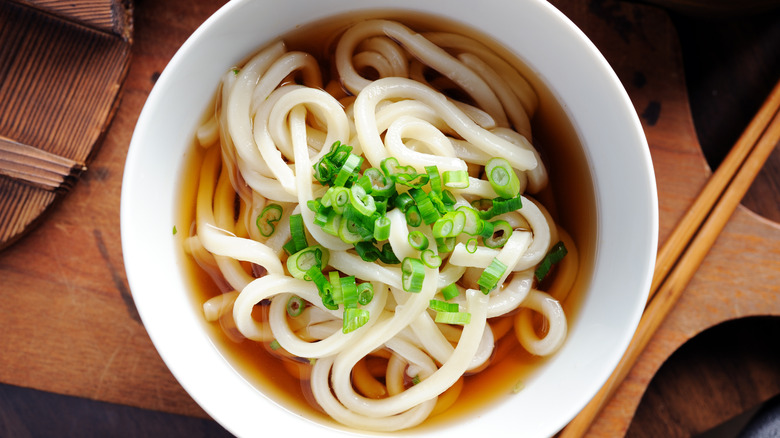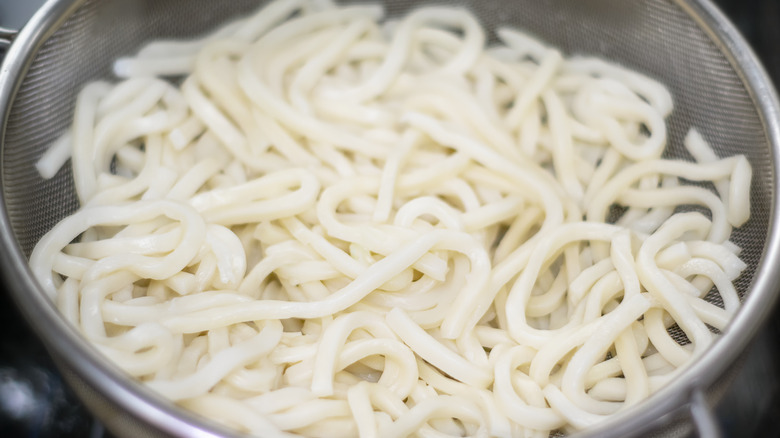The Success Of Homemade Udon Noodles Relies On Reheating
Udon served in broth is the Japanese noodle dish that creates some of the most delicious savory slurps. Varieties of the dish are often found in Japanese restaurants but can be tough to recreate just right at home. But that doesn't mean it's impossible. One of the keys to crafting a delicious udon bowl in your own kitchen is to focus on the texture of the noodles themselves.
Udon noodles are thick and made with wheat flour. This means that they have gluten in them and can be prone to getting sticky, or even mushy when not cooked properly. If you want slurpable noodles with a nice bite and smooth texture, then you have to be careful not to overcook them. One way to avoid this is by chilling the noodles immediately after removing them from the hot water. After straining in a colander, rinse the noodles thoroughly with cold water. This stops the cooking process and removes some of the starch — hot noodles will continue to cook slightly even after being removed from the water if they're not cooled down. When it's time to plate the final dish, give the noodles a quick sauté, or even plunge quickly once more into boiling water, to reheat and then add them to the dashi, or hot broth.
Create restaurant-worthy udon in dashi at home
By chilling the noodles after cooking, you're off to a great start by nailing the udon texture. But what about the flavor? That's all in the broth. To make udon that tastes as good as at your favorite Japanese restaurant, you're going to need to leave the boxed broth on the grocery store shelf and seek out a few ingredients to make your own broth.
When done right, homemade broths are much richer and bursting with flavor, compared to store-bought stand-ins that often fall flat on the palate. Dashi is essentially a type of Japanese broth. Umami is its key flavor and you'll need some bonito flakes and kombu to achieve it. These ingredients aren't as easy to come by at the grocery store as boxed mac and cheese, but if you know where to look you'll find them. Seek out specialty grocery stores or Asian markets if they're not at your regular supermarket. Alternatively, order them online.
In Japan, various broths are used, from Sanuki-style udon with a fishy broth, or Kyoto udon with a thicker broth that includes soy sauce and mirin, to the Yamanashi-style dashi broth which is flavored with miso paste. But we're keeping it simple.
Just steep the bonito flakes and kombu in water to create an umami-rich dashi broth that's still light on the tongue. Pair with your perfectly cooked noodles and you've got a top-notch udon bowl at your own dinner table. Time to start slurping.

